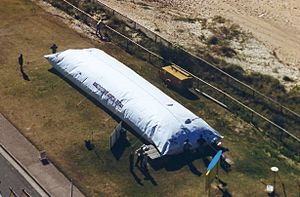Narrow Neck, Queensland facts for kids
Narrow Neck is a special strip of land in Queensland, Australia. It's like a narrow bridge of land. It separates a part of the Nerang River from the big blue Coral Sea. This area is part of the City of Gold Coast. Narrow Neck also marks the border between two suburbs: Main Beach and Surfers Paradise.
Protecting the Coast: Seawalls
In 1920, a highway was built at Narrow Neck. It connected Sydney to Brisbane. Soon after, in 1921, people needed to build a seawall. This was the Gold Coast's very first seawall. It was made of timber.
Over the years, many seawalls were built here. They used different materials. These included old car bodies, trucks, and buses filled with concrete. They also used dumped concrete from old buildings, rocks, and large boulders.
In 2016, the timber wall was updated. The City of Gold Coast used a strong rock design. This was after experts checked all the seawalls along the Gold Coast. Much of the old timber was still in good shape.
The Amazing Artificial Reef
In 1971, experts suggested building a groyne at Narrow Neck. A groyne is a wall built out into the sea. Instead, the Gold Coast City Council decided to build an artificial reef. This reef helps protect the coastline at Narrow Neck. It also aimed to improve surfing.
The reef has been very good at controlling the coast. But it hasn't been as great for surfing. A cool surprise is that the reef attracts lots of marine life. It's now a popular spot for diving and fishing. Narrow Neck is also famous for kite surfing and longboarding.
How the Reef Was Built
The artificial reef is shaped like a "V". It is about 350 meters long and 600 meters wide. It sits 200 meters away from the shore. The reef helps waves break to the left and right of its tip.
It was built using over 400 "mega sand containers." These containers were placed between 1 and 10 meters below the sea surface. Each container was about 20 meters long. They were 3 to 4.8 meters wide. Each one was filled with up to 250 cubic meters of sand. This made them weigh up to 500 tonnes.
The container walls were made of a special strong fabric. This fabric was very tough against damage. Workers filled the containers on the shore. Then, a special ship placed them in the sea. They could install up to 10 containers each day.
In June 2018, more work was done on the reef. Eighty-four more mega sand containers were added. They were placed on top of the existing reef.


